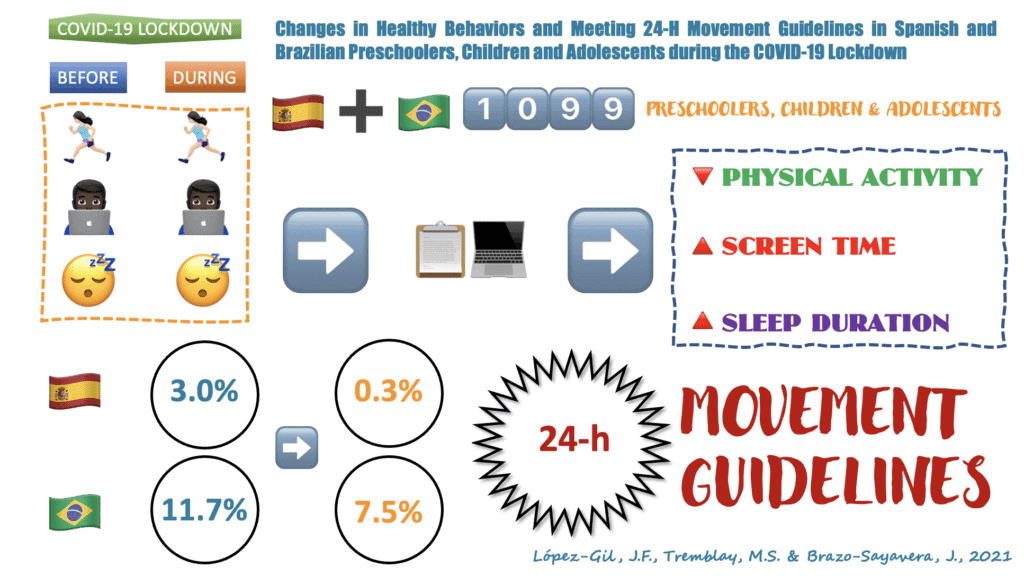Dr. Mark Tremblay and former HALO visiting Professor Dr. Javier Brazo-Sayavera coauthored a paper titled “Changes in healthy behaviors and meeting 24-h Movement Guidelines in Spanish and Brazilian preschoolers, children and adolescents during the COVID-19 lockdown” that was just published in Children. Citation details, a summary of the paper, and graphical abstract are below.
Congratulations, Mark and team!
López-Gil JF, Tremblay MS, Brazo-Sayavera J. Changes in Healthy Behaviors and Meeting 24-h Movement Guidelines in Spanish and Brazilian Preschoolers, Children and Adolescents during the COVID-19 Lockdown. Children. 2021; 8(2):83. https://doi.org/10.3390/children8020083
Background: The aim of this study was to assess changes in physical activity, screen time and sleep duration of preschoolers, children and adolescents and the prevalence of meeting the 24-h movement guidelines during the lockdown caused by COVID-19 in a sample from Spain and Brazil.
Methods: A total of 1099 preschoolers, children and adolescents (aged 3–17 years) from Spain (12.1 ± 4.6 years) and Brazil (10.7 ± 4.3 years) were included. An online survey was created and distributed in each country using a snowball sampling strategy. This online survey was completed by parents (mother/father/responsible guardian).
Results: The proportion of the sample who met the PA and ST recommendations decreased during the COVID-19 lockdown in both Spanish and Brazilian samples (p < 0.001), while sleep duration increased (p < 0.001). The proportion of the sample meeting the overall 24-h movement guidelines was very low before the lockdown (Spain 3.0%; Brazil 11.7%) and even worse during the lockdown (Spain 0.3%; Brazil 7.5%).
Conclusions: The prevalence of preschoolers, children and adolescents in both the Spain and Brazil samples meeting the 24-h movement guidelines during COVID-19 restrictions was as low as previous studies in other countries. Efforts to protect and support healthy behaviors of young people during a period of pandemic restrictions need to be a priority.

Click here to read the full paper (open access).


